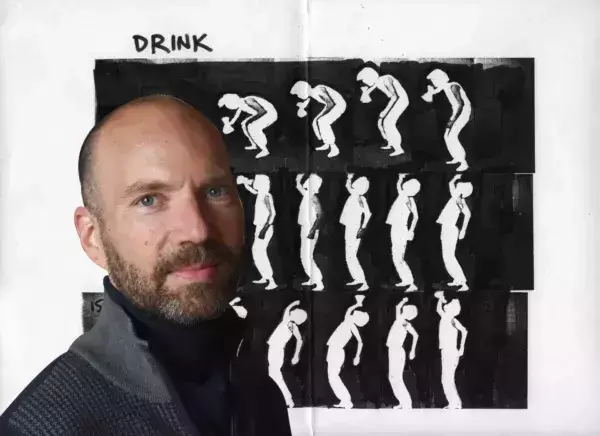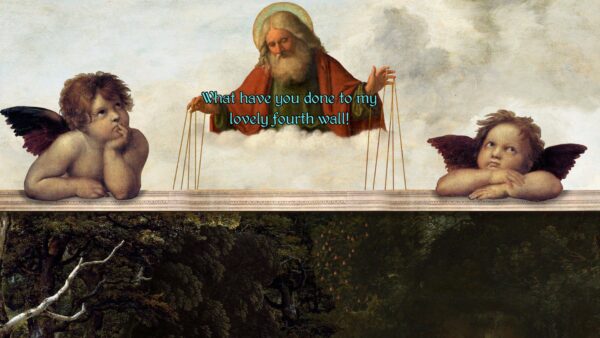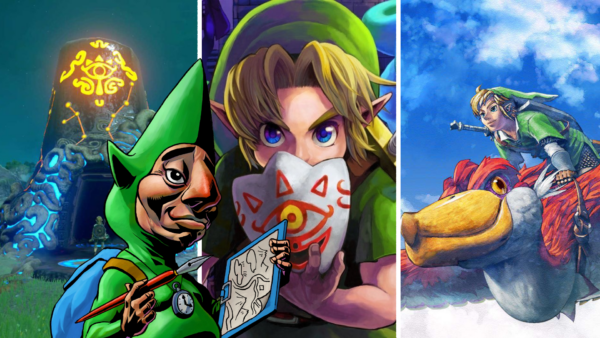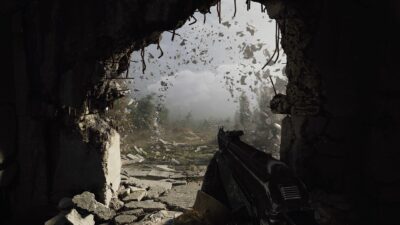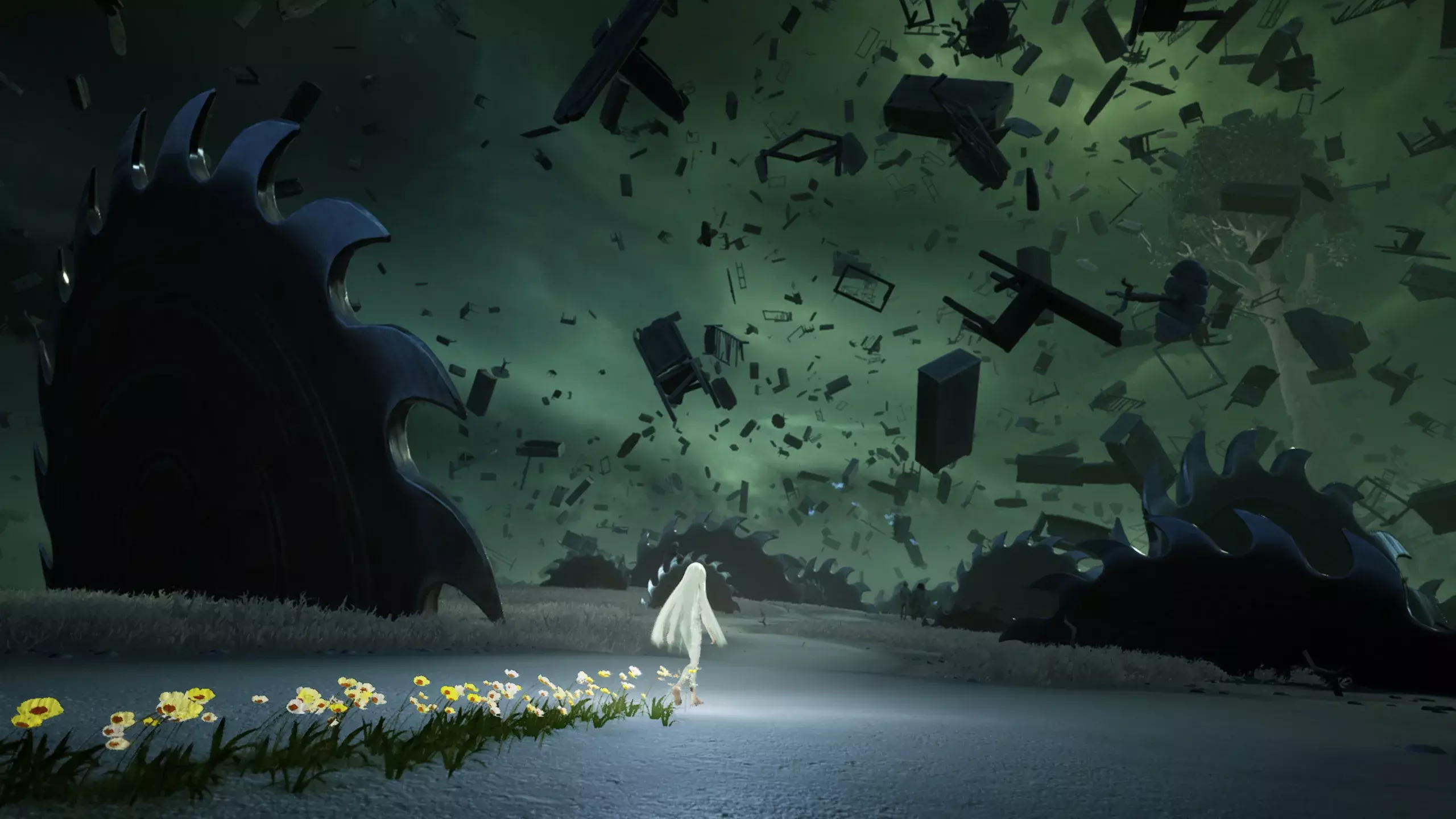
After Us is a surreal adventure about humanity’s potentially dark future. As the game launches, its makers talk about their ambitious follow-up to the indie gem, Arise.
The three founders of Piccolo Studio are big on hope. It’s the core theme of their latest release, After Us – an ethereal platform game that has you navigating various forms of post-human environmental wreckage. True, that may not sound like the most hope-filled scenario, what with everything in the game’s world being dead, but by gathering the spirits of animals, you might gradually invoke the possibility of a less horrific future.
Hope has been a feature of the Piccolo team’s journey as well, given that its directors didn’t have a background in game development before starting the company. Fingers were crossed especially at the end of 2019 when they prepared to release their first game, Arise: A Simple Story – a silent narrative, time-bending platformer that charted the key memories of a recently deceased old man.
“We had a mix of very polarised feelings,” Alexis Corominas, co-game director and co-producer of After Us, recalls. “On one hand, [you’re thinking] that it’s going to sell an incredible number of copies, people will love it. On the other hand, you’re saying, ‘People will hate it, maybe we’re going out of business.’”
Clearly the latter didn’t happen, and for good reason – Arise was a confident, heartfelt debut, full of memorable sights, sounds and feelings. Of course, that means expectations for the studio’s second release are heightened, but if anything Corominas is more at ease this time round. In part that’s simply down to the nature of game development. “The first step in this industry is excruciatingly difficult,” he observes. “Once you’ve shown that you can deliver something, the next steps are much easier.”
In some ways, Piccolo’s CTO and also co-director and producer of After Us, Jordi Ministral, confirms, crossing the finish line with that first title is all that matters. “The objective of making a first game is getting to make a second game.”
Still, it was important that Arise wasn’t just any game, but one which fulfilled the studio’s goal of creating emotional experiences of a kind that aren’t very common in games. In Arise, for instance, it was unusual to play as an old man who moved quite slowly through the world. “Old people aren’t represented much in video games,” Ministral says, “or people looking back at their own lives as the main topic.”
And it was a concept that mirrored their own states of mind. “We were looking back at our own lives at that time – we are not that old, but we were having a sort of middle-age crisis, so we connected with the emotion of looking back.”
High Concept
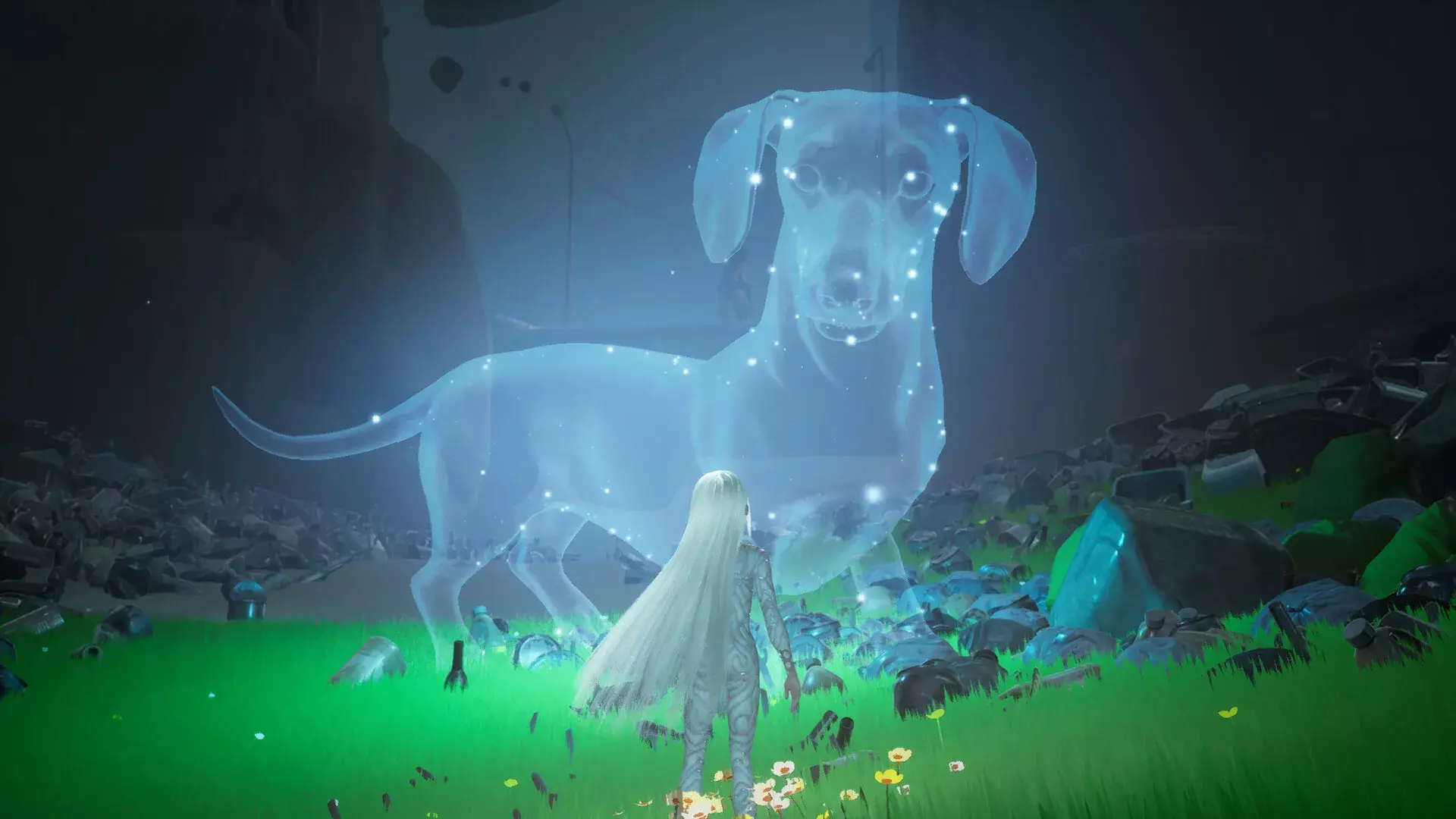
Credit: Piccolo Studio.
After Us took shape while Arise was still in development, as a range of ideas were floated amongst the team. “In the beginning, they don’t work on a single idea,” the third co-founder and Piccolo’s CEO and general manager, Oriol Pujadó, explains. “They come up with lots of ideas, then try to settle on one they think is best, or that can become more gamey.”
As the interview proceeds, this turns out to be a rare intervention from Pujadó, who joins the chat on a remote feed while his partners share a camera in the office, and is apparently content to observe as they bounce answers off each other. But this set up illustrates the point he’s making rather neatly – that Corominas and Ministral are always knocking ideas around to see what sticks, adding to one another’s thoughts until a fully rounded notion emerges.
With both Arise and After Us, the ideas began with concepts and themes first, before mechanics or even genre were part of the picture. It’s a method that’s likely to continue in any future projects too, thanks to the trio’s background in advertising, where placing concepts in people’s minds is always the central ambition. Likewise when it comes to games, Corominas says, “We have these feelings and ideas that we want to put in the mind of the player. [Then we ask,] ‘Okay, how can we achieve that? What kind of character, what world, what action?’”
Understanding the mood of the game is a big initial time investment, Ministral concurs, and only then do they consider how best to create that mood through modes of play.
Despite restarting from scratch, however, After Us does use many of the same tools as Arise did to get the emotions running. There are big differences, most obviously in the scale of the game world Piccolo has created, which is much more open to exploration, as well as in the player character – a lithe nymph whose sprinting, air-dashing, double-jumping acrobatics are the polar opposite of the sore-jointed Santa-like in Arise. But beneath all that you can sense the same DNA – After Us is once again a third-person platform game after all, and one in which a unique mechanic in each area helps weave the narrative.
Also, it’s clear by now that Piccolo games will always place a heavy emphasis on the visual composition of scenes. “We want to bring [different] media together,” Ministral says, “and we invest a lot in what you see.” The way images in After Us are framed, then, may be influenced by paintings, or by cinematography. “I studied cinema,” Corominas says, “so I love this kind of framing.”
But the point of course is not merely to make pretty views, Ministral returns, but express meaning that you may or may not engage with. “I think it’s more powerful than just telling things or having characters give long speeches about what you should feel.”
Bending the Rules
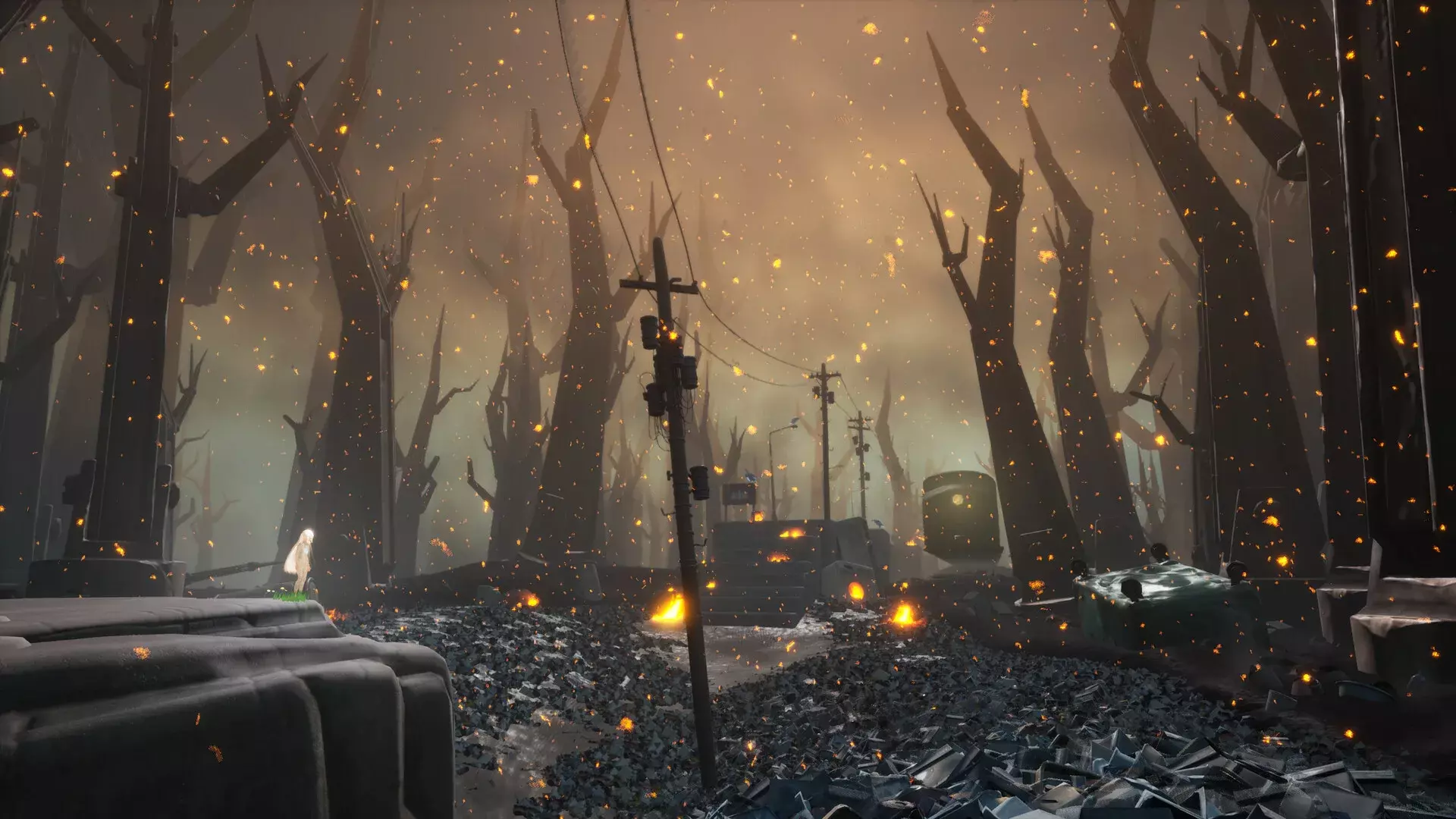
Credit: Piccolo Studio.
That commitment to artistry does come with challenges, though. Some scenes in Arise were weakened, for example, by frustrations related to a distant camera that couldn’t be directly controlled. In After Us, the team has tried to make amends. “We have these beautiful environments,” Pujadó says, “and we have a story to tell. So we want people to flow with the game. If we make the controls harder, we know that sometimes people get annoyed by them.”
As such, the main character can adjust her flight path much more easily, with an agility that makes her immediately responsive. But even so, the camera remains quite zoomed out, and the directors aren’t about to compromise on visual presentation. “The character is small, which doesn’t seem ideal for platforming,” Ministral understands, “but we’ve adjusted everything so it feels right. And when you see a screenshot of our game it still looks a bit different from other games.”
This refusal to do the ‘right’ thing according to game design rules is doubtless also a legacy of that past in advertising. “Most of the team we assembled [for Arise] were industry veterans,” Corominas explains. “And we came with these ideas from outside, and they were like, ‘Oh, you don’t do that in game design.’ And we said, ‘Yeah, but we want to.’” He feels it’s important to be unconventional, even if that means getting some things wrong. “[In review scores] you can have an average of seven because everyone thinks it’s a seven game,” he says, “or you can have a seven average because some people think it’s a nine, and others think it’s a five.” For Corominas, the second of those camps is a far more interesting space to occupy. “Of course, we’d prefer if everyone thinks it’s a nine,” he adds.
In After Us, divergence from modern design norms comes in an absence of explicit guidance through its wide spaces, which is supposed to create more natural progression. “Sometimes you can feel a bit lost,” Corominas says, “which is part of the experience, but you always find a way.” There’s also the matter of ‘collectible’ animal spirits dotted in nooks and crannies around the environment, which don’t offer any tangible functional rewards. “If you were to go to a lot of studios and you wanted to do that, you will fall into a more generic design,” Corominas believes, such as trading your finds for upgrades. “But we say, ‘No.’ The world is more beautiful with the animals roaming around, that’s your reward.”
That said, both Arise and After Us are still recognisable as platforming adventures, and After Us mainly sticks to common genre verbs as you navigate gaps and obstacles and even indulge in some light combat. Piccolo isn’t trying to reinvent the wheel. “If you ask anyone, ‘Do you want more innovation?’” Ministral says, “Everybody says ‘Yeah, why not?’ But how much can you move away from some conventions in terms of what the game is and what you do? It’s tricky.” In reality, people aren’t receptive to innovation in every area, he believes, so you have to know when to stop, and find the right balance between the recognisable and the strange. “We like to walk that very narrow path.”
A New Hope
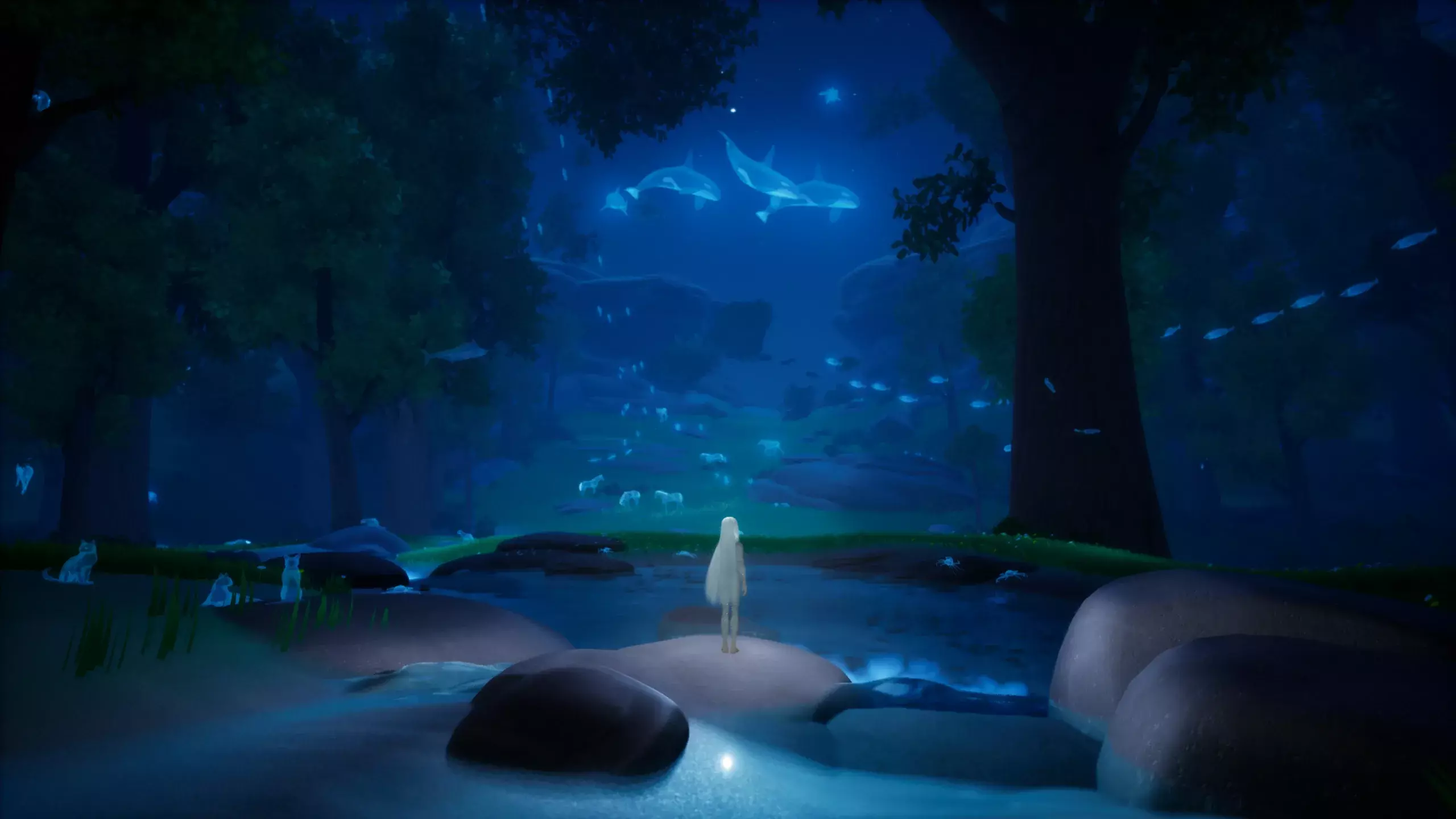
Credit: Piccolo Studio.
As for the all-important feelings After Us might conjure up, well, many of them should emerge as you pick your way through a world choked by human greed and violence. As much as Arise was personal but also universal in looking back at the joys and sorrows of an individual life, After Us is more global. “For After Us we wanted to look ahead,” Ministral says, “but as a generation, even as a species, at what we’re leaving behind.”
It’s the other side of a coin, in a sense, staring outward instead of inward, beyond our selves. It’s also still another “simple story”, Corominas says, even if it’s facing up the harder subject matter of mass extinction. “We want you to achieve this melancholic mental state about this life that is so beautiful, and it’s getting lost.”
After Us is coated in sadness, then, whether you’re navigating environments clogged with deadly waste or uncovering the carcasses of majestic beasts. Yet, the co-directors reiterate, it really is a tale of hope. “We are positive, and we are the kind of people that think we can do it,” Corominas says, by which he means building a better future. Throughout the game, this hope buds in various ways, for example in visual flourishes around the main character, who leaves brief blooms of grass and flowers wherever she treads, or in the animal spirits you find and free. The more you discover, the more they populate the environments, and the more alive the world feels. “It is small details,” Ministral says, “that make you feel like you’re this spark of hope.”
So what do Corominas and Ministral themselves hope for in terms of what their game can achieve? “If we can just move a few people from hopeless to hopeful, that’s what we set out to do,” Ministral says. They understand that they don’t have answers as to how humanity might change course, but they can visualise the change they want to see, and if this kind of reframing of reality means anything in art, then Piccolo’s rich worlds are surely worth something. They also want After Us to underline, however, that optimism needs to become viral.
“We didn’t want to make you feel that the world is dead and it just needs a hero to change everything,” Corominas says. “You are a small part. If we all start going in that direction it will be easier, but it’s not a task for one person.”
After Us is out now for PC, PS5 and Xbox Series X/S.


